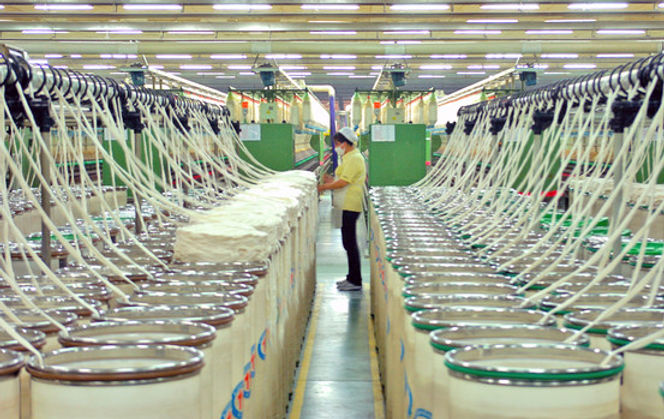
My Account
SPINNING
Textile is any material made of interlacing fibers, including animal fibers, plant fibers, and synthetic fibers. It is used to make a variety of products, including clothing, home furnishings, and industrial products. The history of textile production dates back to prehistoric times, when people first began to weave fibers into fabric. This process has been refined over the centuries, and today, textiles are produced in a variety of ways, including weaving, knitting, and felting.
In weaving, two sets of yarns are interlaced to form a fabric. The first set of yarns, the warp yarns, are placed on a loom and held in place. The second set, the weft yarns, are then passed over and under the warp yarns to form a pattern. Knitting is a process in which one set of yarns is looped around another set of yarns to form a fabric. The loops are formed by knitting needles that are used to manipulate the yarns. Felting is a process in which fibers are matted together by heat, moisture, and pressure. This process is used to create felt fabrics, which are often used in clothing and accessories.
Textiles are used to make a variety of products, including clothing, upholstery, carpets, and curtains. They are also used to create industrial products, such as filters, insulation, and rope. Textiles are also used in the medical field, to create bandages, sutures, and prosthetic devices. Textiles are produced from a variety of fibers, including natural fibers such as cotton, wool, and silk, and synthetic fibers such as polyester, nylon, and acrylic. Each type of fiber has different characteristics, and when combined with other fibers, can create fabrics with unique properties.
Spinning


Spinning is the process of twisting fibers together to form yarn. It is a key step in the production of textiles, and is used to make fabrics such as cotton, wool, and linen.
The spinning process begins with a supply of raw material, such as cotton fibers or wool fibers. These fibers are then cleaned and combed to remove dirt and other impurities. They are then fed into a spinning machine, which twists the fibers together to form yarn. This yarn is wound onto bobbins or spindles, which can then be used to weave fabrics.
Spinning is an important part of the textile industry, and can be done by hand or with machines. Hand spinning is a traditional technique used in many parts of the world, while machine spinning is a more modern approach. In either case, the spinning process helps to create fabrics that are strong and durable.
01
Number of Spindles
02
Number of Ring Frame
03
Auto Doffing
04
Specialised in Melange and Fashion Yarn
Copyright © P.N.Composite. All Rights Reserved.
Copyright © P.N.Composite. All Rights Reserved.

